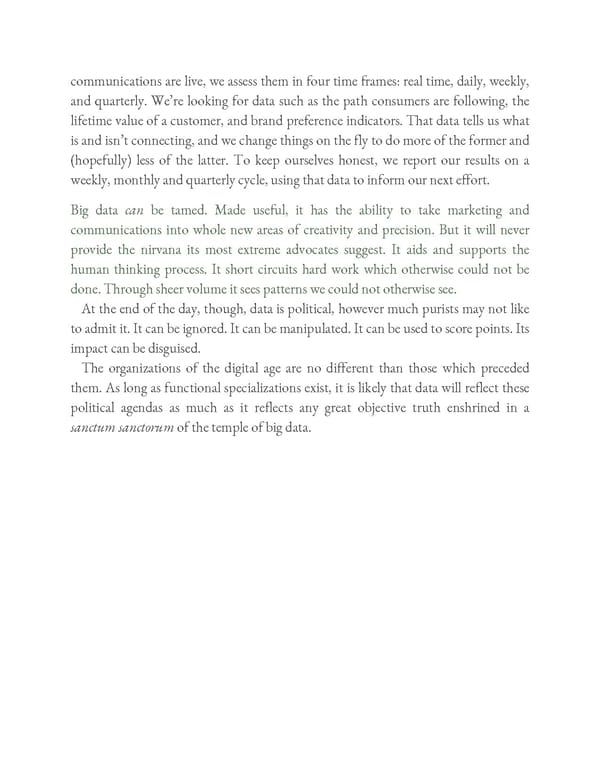communications are live, we assess them in four time frames: real time, daily, weekly, and quarterly. We’re looking for data such as the path consumers are following, the lifetime value of a customer, and brand preference indicators. That data tells us what is and isn’t connecting, and we change things on the fly to do more of the former and (hopefully) less of the latter. To keep ourselves honest, we report our results on a weekly, monthly and quarterly cycle, using that data to inform our next effort. Big data can be tamed. Made useful, it has the ability to take marketing and communications into whole new areas of creativity and precision. But it will never provide the nirvana its most extreme advocates suggest. It aids and supports the human thinking process. It short circuits hard work which otherwise could not be done. Through sheer volume it sees patterns we could not otherwise see. At the end of the day, though, data is political, however much purists may not like to admit it. It can be ignored. It can be manipulated. It can be used to score points. Its impact can be disguised. The organizations of the digital age are no different than those which preceded them. As long as functional specializations exist, it is likely that data will reflect these political agendas as much as it reflects any great objective truth enshrined in a sanctum sanctorum of the temple of big data.
 Ogilvy on Advertising in the Digital Age Page 230 Page 232
Ogilvy on Advertising in the Digital Age Page 230 Page 232